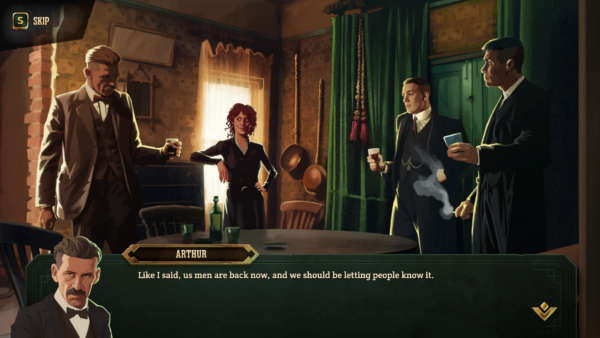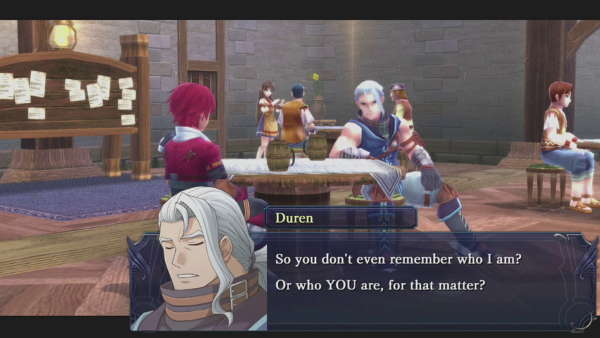Every once in a while there comes a title that pushes the boundaries of what a video game is. It makes gamers question whether the product is an interactive experience with pulse pounding gameplay or simply an interactive story that you are the pawn in. This is especially apparent with the newest title from Galactic Cafe, The Stanley Parable. Is it a game, an interactive movie or simply a lesson in gameplay mechanics that we, as gamers, have grown accustomed to? Let’s step into Stanley’s office and find out.
The game centres around a man by the name of Stanley. He is an ordinary man who works an ordinary job in an office block. Every day he comes into work, types away at his computer and goes home to his family. A very simple life, until his definition of the norm suddenly changes. One day as Stanley enters his office and looks at his computer, he sees that he has nothing to type. The machine that had been giving him tasks all this time suddenly has nothing to give our simple minded worker. That’s when Stanley realises that the world around him has suddenly changed. Thus, his parable begins.

Without giving away any spoilers, the story is a compelling one. After listening to the narrator explain Stanley’s normal life, you feel compelled to look deeper into this mystery. Why have things changed? What is really going on in this building? The story does a great job of keeping you enthralled, especially as there are many different places the story can take you. The narrative itself is directed by a mysterious narrating voice that looms over Stanley’s head. It simply suggests where you should go on your search for the truth, which you can abide by or go against at your own leisure. This then leads on to one crucial area of the title, the gameplay.
To say that The Stanley parable has deep gameplay elements is a farce. It is bizarre as all you really seem to do gameplay wise is walk around and actively drive the narrative. Even though the narrator suggests what you should do, you are given options throughout the game. These options are in the form of doorways or stairways that can guide you and the story into a different direction. There are many endings to the tale that are actively driven by your choices as a player. Do you follow what you are told or do you go against these orders in order to explore the situation? That is the choice you must make and every choice is put into consideration. Or is it?
Whilst playing through the game it became apparent that it never truly wanted you to stop. The choices you make the first or second time through do create different outcomes. However a recurring theme starts to take hold. Every single time you feel that you have ‘ended’ the game, it starts you off back at Stanley’s office where the narrative begins again. Why is this? The first couple of times through, you may think that the ending you got was not the ‘true’ one and instead was a what if ending. So starting at the beginning again could be an indication that you haven’t found Stanley’s true ending. But this seems to happen to you every single time. The game truly doesn’t have an ending. Instead it’s a continuous loop of the norm, constantly making you question your actions and making you believe that the narrators guide could be the true path. This was when, during my gameplay experience, my mind blew with a revelation.

The Stanley Parable is in fact, not a game. Instead it is a lesson, an interactive experience that teaches the player about games design and the act of mind control. Let’s think about this with an example, early on in the game you come across two doors. The narrator says that Stanley goes to the door on his left, but there is still the option of going right. If you take the left path the narrative continues with the narrator leading the way. However, if you go against this choice the narrative itself tries to convince you to turn back onto the right path. Remind you of anything? Does this remind you of a game with a linear narrative which, if you did not follow, punished you as you went off the straight and narrow path. Take Journey for example, if you wish to explore the world around you, the world itself will simply push you back onto the right path. Just like how the narrator tries to push you back onto the seemingly correct route.
Also contemplate this as an idea, the concept of The Stanley parable teaching you about mind control in video games. An obvious title to use as a link to this is the original Bioshock. In 2K’s original journey through Rapture, you discovered that you were being controlled with the simple phrase ‘Would you kindly’. Now bear in mind, that is a phrase which actively drove the narrative, whilst in this case the story is being driven by a suggestive demeanour. The game wishes for you to make your own choices but punishes you if you want to question the normality of things. This is where The Stanley Parable truly shines as a game. It questions video game structure and narrative disposition. It allows players to question what is normal in gaming and think why the simple use of narration can drive your decisions as a player. A true mystery that sadly not everyone will understand.
Overall, The Stanley Parable is a unique specimen. Some will class it as a video game whilst others will simply think of it as a waste of money. But if you take your time with it and think about what it is trying to show you behind Stanley’s perspective, then you may realise what the game itself is trying to teach you. Are narratives in games truly giving you a choice? Are you actively changing the story around you, or are you simply going in the wrong direction? These questions and many more appear in the title and, quite frankly, turn this game into one you truly have to experience to understand.
So what do you think of The Stanley Parable? Is it a video game in your eyes or a lesson in games design itself? Let us know what you think in the comments below and be sure to watch our playthrough of The Stanley Parable on the VGU video section.








